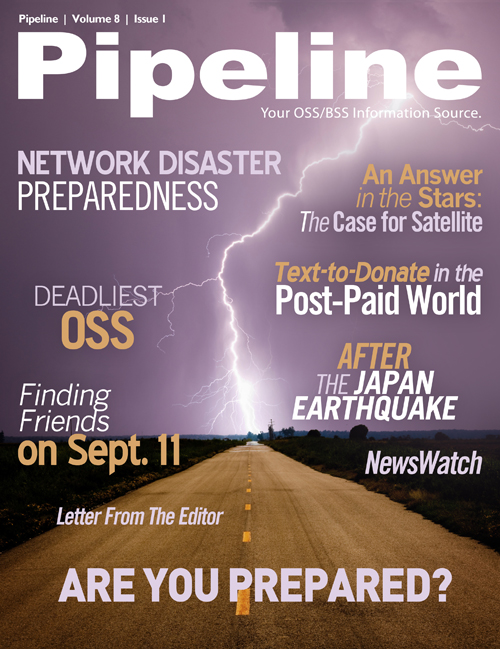By: Jesse Cryderman

I lived in rural Indiana in the 1980s, and the coolest family in town had a giant dish trained at the sky in their backyard that beamed all the movies we could watch into their living room television. Nevermind the fact that these neighbors had sacrificed their backyard to the swimming-pool-size sky eye—they had cable, something unheard of in our zip code. This was my first introduction to satellite technology.
Just as mobile phones that can fit on a watch once required a car battery and a backpack to live up to their name, satellite technology has undergone extensive miniaturization and is now a mature technology that provides much more than cable TV to entertainment-starved farm kids. Advances like VSATs (Very Small Aperture Terminals), Ka-band spectrum, energy efficiency, signal optimization, and compression technologies have all culminated in a global satellite network that is widely used in disaster recovery and is increasingly attractive as a backhaul technology.
Everyone has seen the proliferation of satellite cable VSATs (DISH Network, etc.) and satellite phones, but what is the current state of commercial satellite technology, and is it a viable backhaul alternative?
Disaster Recovery Applications
“If we learned anything from Hurricane Katrina, it is that we cannot rely solely on terrestrial communications.” FCC Chairman Kevin Martin.
Despite overlapping coverage and preventative planning, terrestrial networks are still very vulnerable to natural or manmade disasters and terrorist attacks. Hurricanes Katina and Rita, and the recent disaster in Haiti saw massive outages in these regions that not only pulled the plug from businesses and consumers, but also made relief efforts much more difficult. Satellite technologies were used extensively in these regions to rapidly provision communication within the relief community and get mission-critical systems (healthcare, banking) back online until terrestrial solutions were functional.
A white paper prepared by the Space and Advanced Communications Research Institute on Emergency Communications outlined some of these disaster recovery efforts:
“Commercial satellite operators have generously made capacity as well as VSATs and hand-held units available in disaster areas, as was seen in the case of Hurricanes Katrina and Rita. Intelsat, SES-Americom, PanAmSat, and Loral Skynet each supported the restoration of communications services via satellite. In the mobile satellite Iridium, Globalstar, Mobile Satellite Ventures, and Inmarsat among others provided sector support.”
VSAT Systems issued a press release during the Haitian disaster that detailed specific services enabled by their satellite technology. “Our satellite Internet disaster response solutions are currently being used by medical aid workers and relief agencies to coordinate logistics, and by humanitarian agencies to provide Internet and voice services to people in Haiti to let their loved ones know they’re OK.”
While corporate generosity fueled the rapid implementation of satellite communications, it can’t be relied on exclusively. Global emergency management consortiums are calling for greater national satellite network solutions, which will likely evolve into actionable plans in the near future.










